Egyptian temples, those awe-inspiring structures that have withstood the test of time, continue to captivate the hearts and minds of people across the globe. These monumental towers hold a timeless allure, drawing us into the mysterious depths of ancient Egypt’s history. Their grandeur and intricate architecture beckon us to explore the rich tapestry of a civilization that flourished thousands of years ago.
The mere thought of Egyptian temples conjures images of monumental gateways, towering columns, and intricate hieroglyphics that tell stories of a bygone era. These temples, many dedicated to various gods and goddesses, serve as portals to the past, transporting us to a time when the pharaohs ruled the land of the Nile.
As we delve into the fascination of Egyptian temples, we discover the historical significance that these structures hold. They were not just places of worship but also centers of learning, art, and cultural expression. The complexities of their construction leave us in awe of the engineering prowess of ancient Egyptians, who meticulously aligned these temples with celestial bodies and natural landmarks.
Exploring Top 10 Egyptian Temples
Egypt, the land of the pharaohs, is home to some of the most magnificent temples in the world. These ancient structures are not just architectural marvels, but they also hold a wealth of historical and cultural significance. In this journey through Egypt’s rich past, we will explore some of the best Egyptian temples that have stood the test of time.
1- Karnak Temple Complex
The Karnak Temple Complex, located in Luxor, Egypt, is one of the most exquisite and awe-inspiring temple complexes in the world. It stands as a testament to the remarkable architectural and religious achievements of the ancient Egyptians.
- Vast and Impressive: The Karnak Temple Complex is extensive, covering over 200 acres. It’s a remarkable network of temples, chapels, pylons, and halls dedicated to various deities. The sheer size and grandeur of the complex leave visitors in awe.
- The Great Hypostyle Hall: One of the most iconic features is the Great Hypostyle Hall, a colossal structure with towering columns adorned with intricate hieroglyphs. This architectural wonder is a testament to the incredible craftsmanship of the time.
- Dedicated to Amun-Ra: The main focus of Karnak is the Temple of Amun-Ra, the king of the gods. It served as a center for religious worship and was a place for rituals, ceremonies, and offerings to ensure the favor of Amun-Ra.
- Historical Significance: The temple complex has been continually expanded and modified by various pharaohs over many centuries. The inscriptions and carvings on the temple’s walls provide a rich source of historical and religious information, allowing us to trace the evolving beliefs and practices of the ancient Egyptians.
- Sound and Light Show: Today, the Karnak Temple Complex also hosts a popular sound and light show that brings the temple to life at night. This immersive experience provides a vivid portrayal of the temple’s history and significance.
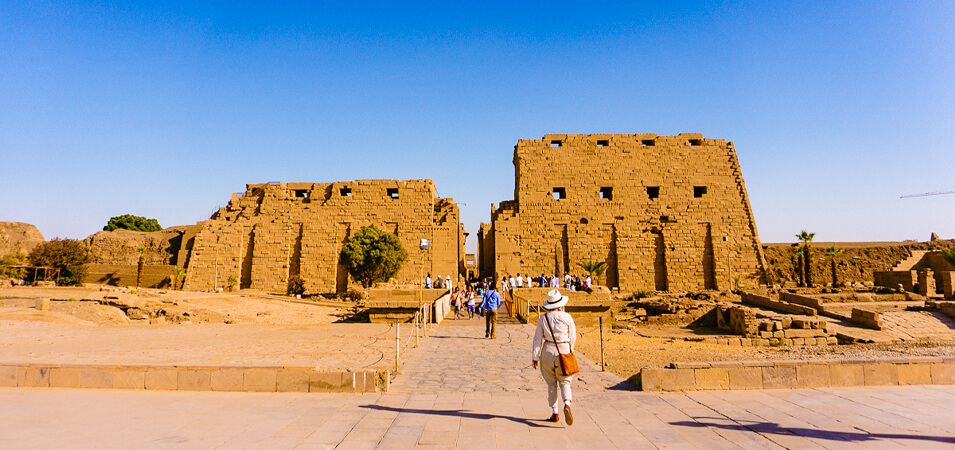
2- Luxor Temple
The Luxor Temple, situated in the heart of Luxor, is a magnificent and well-preserved ancient Egyptian temple that provides a unique blend of history and modern life.
- Urban Archaeology: What makes the Luxor Temple particularly fascinating is that it is right in the heart of modern Luxor, where ancient history and contemporary city life coexist. The Avenue of the Sphinxes, a grand processional avenue connecting Luxor Temple to Karnak Temple, has been beautifully integrated into the cityscape.
- Religious Significance: The Luxor Temple was dedicated to the Theban Triad of Amun, Mut, and Chons. It served as a religious center and was crucial in various religious festivals and ceremonies.
- Architectural Marvels: The temple features impressive structures, such as massive pylon gates, towering obelisks, and beautifully decorated courtyards. The stunning colonnade of Amenhotep III is a particularly striking feature.
- Ramesses II Connection: Over time, several pharaohs contributed to the temple’s construction and renovation, but it was Ramesses II who made significant additions. The colossal seated statues of Ramesses II at the entrance are a testament to his grandeur and power.
- Modern Life and History: While exploring the Luxor Temple, you’ll witness everyday life. The juxtaposition of a vibrant city and a well-preserved ancient temple creates a unique atmosphere unlike any other archaeological site.
Visiting the Luxor Temple offers a remarkable opportunity to experience the rich history of ancient Egypt in a modern urban setting. It’s a place where the past and present seamlessly coexist, providing a vivid connection to the cultural heritage of this extraordinary civilization.
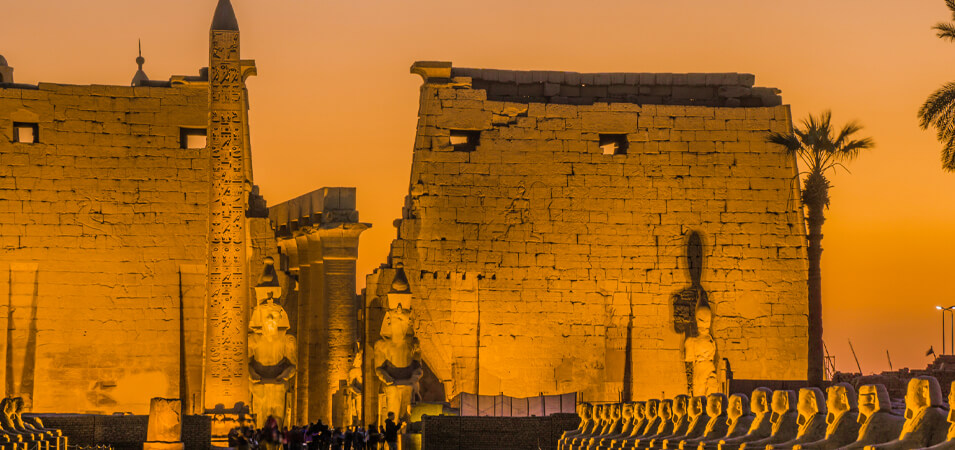
3- Temples of Abu Simbel
The Temples of Abu Simbel, located in southern Egypt near the border with Sudan, are iconic and extraordinary examples of ancient Egyptian architecture and engineering. These twin temples, built by Pharaoh Ramses II, are among the most awe-inspiring monuments in the country.
- Relocation Marvel: What sets Abu Simbel apart is its relocation. In a remarkable international effort, the temples were moved from their original location to save them from being submerged by the rising waters of Lake Nasser during the construction of the Aswan High Dam. This engineering feat preserved these historical treasures for generations to come.
- Colossal Statues: The most iconic features of Abu Simbel are the colossal statues of Ramses II at the entrance. These massive figures, each standing over 65 feet tall, are not only a tribute to the pharaoh’s might but also serve as a representation of Egypt’s grandeur.
- The Great Temple: The larger of the two temples is the Great Temple of Ramses II, dedicated to the gods Ra-Horakhty, Amun, and Ptah. The interior is adorned with intricate carvings and hieroglyphs that depict Ramses’ military victories and divine connections.
- The Small Temple: The Small Temple is dedicated to Ramses II’s queen, Nefertari, and the goddess Hathor. This temple is also decorated with stunning reliefs, showcasing the important role of women in ancient Egypt.
- Solar Alignment: Twice a year, on February 22 and October 22, the rising sun aligns perfectly with the temple’s inner sanctum, illuminating statues of the gods seated within. This solar alignment is a testament to the advanced astronomical knowledge of the ancient Egyptians.
4- Philae Temple
Nestled on a tranquil island in the Nile, the Philae Temple is a captivating testament to the enduring spirit of ancient Egyptian architecture and spirituality. This temple, dedicated to the goddess Isis, offers a serene and picturesque backdrop as you step into the realm of ancient Egypt.
One of the most striking features of Philae Temple is its relocation. In a remarkable engineering feat, the temple was dismantled and relocated to Agilkia Island to save it from being submerged by the rising waters of the Aswan High Dam. This rescue operation preserved this historical gem for future generations.
The temple’s beauty lies in its intricate reliefs and carvings, which narrate stories from Egyptian mythology and the life of the goddess Isis. As you explore the temple’s halls and sanctuaries, you’ll be transported to a world where gods and goddesses held a central role in the Egyptians’ lives.
The Philae Temple’s celestial alignment is another captivating aspect. It was carefully oriented to align with the moon’s cycles, emphasizing the Egyptians’ profound connection to the heavenly bodies and their importance in religious practices.
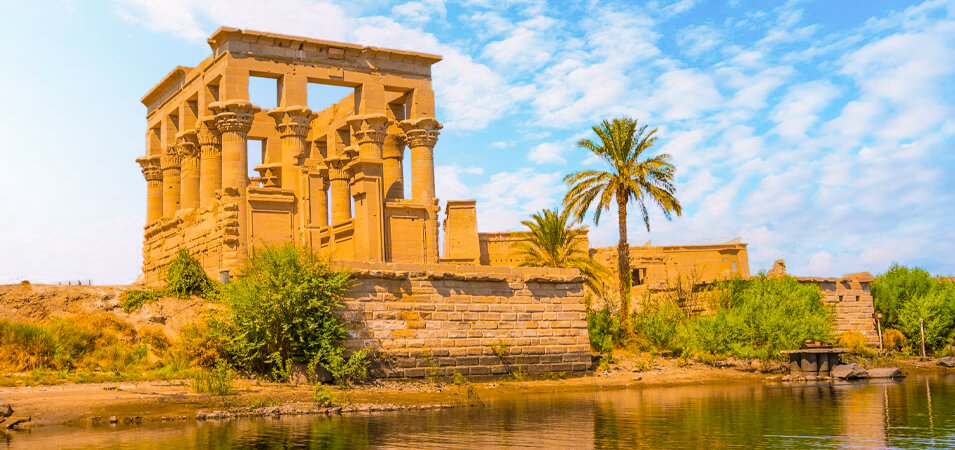
5- Edfu Temple
Standing proudly on the west bank of the Nile, the Edfu Temple is a magnificent showcase of ancient Egyptian religious architecture. Dedicated to the falcon god Horus, this temple is not just a monument; it’s a portal to the past, revealing the grandeur of a civilization that revered its deities with unparalleled devotion.
One of the most remarkable aspects of Edfu Temple is its preservation. Unlike many other ancient sites, it has remained astonishingly intact, offering a vivid glimpse into the past. As you stroll through its towering columns and vast courtyards, you’ll witness the awe-inspiring precision with which it was constructed.
The temple’s walls are adorned with intricate carvings and hieroglyphs that narrate tales from Egyptian mythology and the life of Horus. The level of detail in these reliefs is a testament to the skill and artistry of the ancient artisans, providing valuable insights into the religious beliefs and rituals of the time.
What’s truly fascinating about Edfu Temple is its role as a center for the worship of Horus. Pilgrims and devotees from ancient Egypt would journey to Edfu to pay homage to this god, making it a hub of religious activity. The temple’s layout and design emphasize the importance of these rituals and the divine connection they sought to establish.
For those seeking to immerse themselves in the world of ancient Egypt, Edfu Temple is an essential stop. Its exceptional state of preservation, rich history, and striking architecture make it a place where the past comes alive. As you explore its sacred chambers and courtyards, you can’t help but be inspired by the profound reverence and devotion that once filled these hallowed halls.
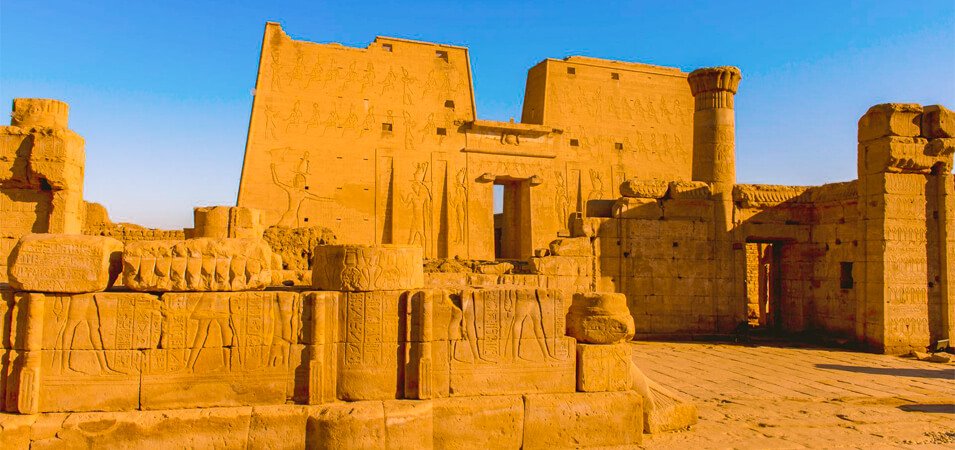
6- Kom Ombo Temple
The Kom Ombo Temple, a captivating and unique structure in Upper Egypt, holds a special place in the rich tapestry of Egyptian temples. What sets it apart is that it is a double temple dedicated to two distinct deities: Sobek, the crocodile god, and Horus, the falcon-headed god. This duality is a testament to the complex religious beliefs of ancient Egypt.
- Unique Dual Design: The temple is symmetrically divided into two sections, one for Sobek and the other for Horus, with each having its own entrance and sanctuary. This division signifies a harmonious coexistence of these two gods and their respective followers.
- Crocodile Worship: Sobek, the god of the Nile and fertility, was particularly important in this region where crocodiles were a common sight. Worshippers believed that appeasing Sobek would protect them from the Nile’s dangers.
- Healing and Medicine: The Kom Ombo Temple was also renowned for its healing practices. It had an area known as the “House of Crocodile,” where patients sought cures for various ailments. It’s thought that the temple offered early examples of surgical and medical knowledge.
- Intricate Carvings and Reliefs: The temple boasts stunning carvings and reliefs that depict intricate scenes from daily life and religious rituals. These well-preserved details provide valuable insights into the religious and cultural practices of ancient Egypt.
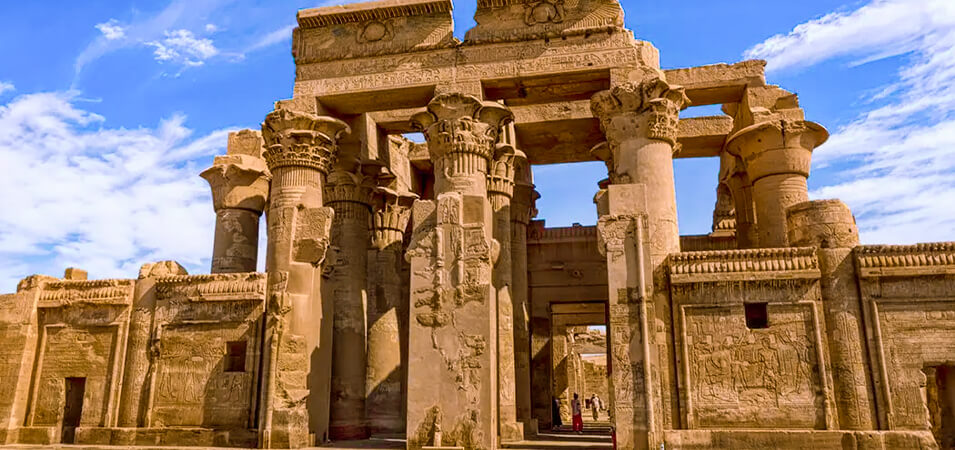
7- Dendera Temple
The Dendera Temple, located in the town of Dendera, north of Luxor, is an exceptionally well-preserved ancient Egyptian temple complex dedicated to the goddess Hathor. This temple offers visitors a fascinating glimpse into the religious practices and architectural brilliance of the ancient Egyptians.
- Hathor, the Goddess of Love and Music: The Dendera Temple is primarily dedicated to Hathor, the goddess of love, music, dance, and fertility. Hathor was a beloved deity, and this temple was a place of worship and celebration in her honor.
- Impressive Architecture: The temple’s design is a testament to the architectural prowess of the time. It features beautifully adorned columns, intricate carvings, and a hypostyle hall that will leave you in awe. The complex includes the main temple, a birth house, a sanatorium, and other buildings.
- Zodiac Ceiling: One of the most famous features of the Dendera Temple is the “Dendera Zodiac,” a remarkable depiction of the night sky. This detailed astronomical carving provides insights into the ancient Egyptians’ knowledge of the stars and their religious significance.
- Religious Significance: The temple was not only a place of worship but also a center for healing and religious rituals. Pilgrims and visitors came to seek blessings and cures for various ailments.
- Conservation and Restoration: Efforts to conserve and restore the Dendera Temple complex have been ongoing, ensuring its beauty and historical significance are preserved for future generations.
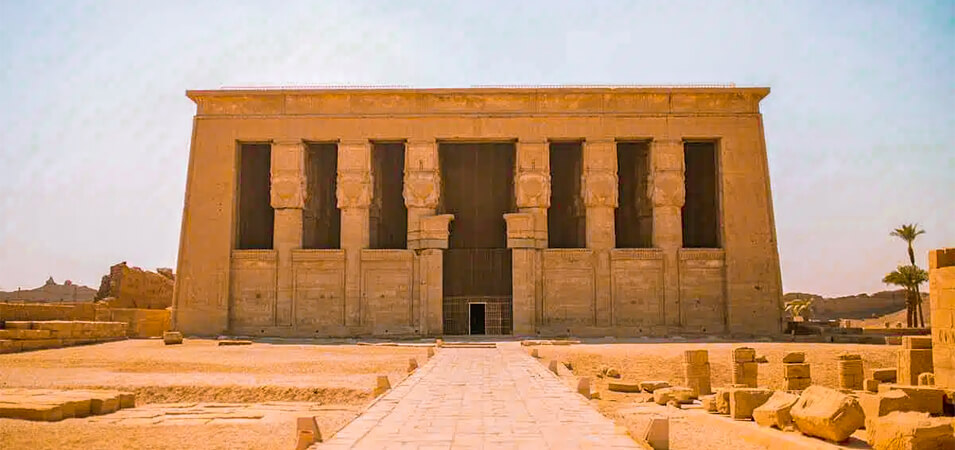
8- Temple of Hatshepsut
The Temple of Hatshepsut, located on the west bank of the Nile near Luxor, is one of Egypt’s most remarkable and well-preserved ancient monuments. This temple is dedicated to Queen Hatshepsut, one of Egypt’s few female pharaohs, and it stands as a testament to her reign and architectural innovation.
- Unique Architecture: What sets this temple apart is its architectural design. It’s structured in terraces with colonnades, blending beautifully with the surrounding cliffs. The temple’s three levels give it a distinctive appearance.
- Hatshepsut’s Legacy: The temple was built to honor and immortalize the achievements of Queen Hatshepsut, who reigned during the 15th century BC. It reflects her role as a powerful and successful ruler.
- Religious Significance: The Temple of Hatshepsut also has a spiritual aspect. It is dedicated to the god Amun and where rituals and offerings were made to ensure the gods’ favor and the kingdom’s prosperity.
- Intricate Reliefs and Statues: The temple’s walls are adorned with intricate reliefs and inscriptions that tell the story of Hatshepsut’s divine birth and her extraordinary reign. The temple also features statues of the queen, some of which are now displayed in museums around the world.
- Conservation and Restoration: The Temple of Hatshepsut has undergone extensive restoration and conservation work to preserve its grandeur and historical significance. Efforts continue to maintain this iconic structure for future generations.
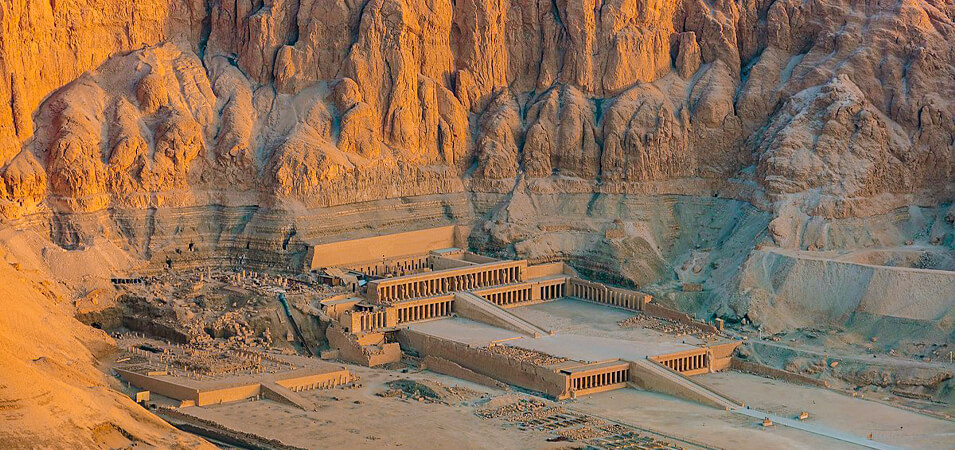
9- Abydos Temple
The Abydos Temple, located in the ancient city of Abydos in Upper Egypt, has immense historical and religious significance. This temple, dedicated to the god Osiris, offers a unique glimpse into old Egyptian beliefs and traditions.
- Osiris, the God of the Afterlife: Abydos is considered one of the holiest sites in ancient Egypt, primarily because it is associated with Osiris, the god of the afterlife and the underworld. The temple was built to honor Osiris and to ensure his continued blessings on the deceased.
- History and Construction: The Abydos Temple complex consists of several structures, the most significant being the Temple of Seti I. This temple is famous for its well-preserved reliefs and inscriptions, showcasing the pharaoh’s dedication to Osiris and the rituals performed here.
- Pilgrimage Site: In ancient times, Abydos was a prominent pilgrimage destination. People believed that visiting this sacred site and offering prayers would secure a place in the afterlife, making it a crucial element of their religious journey.
- Well-Preserved Hieroglyphs: The temple boasts intricate hieroglyphs and carvings that narrate ancient Egyptian myths and religious stories. These inscriptions provide valuable insights into the religious beliefs and practices of the time.
- Importance for Pharaohs: Abydos was a significant location for many pharaohs. It was associated with the pharaoh’s journey to the afterlife, and they often left inscriptions and built structures in Abydos to ensure their place alongside Osiris.
- Conservation and Restoration: Like many other ancient Egyptian temples, Abydos has undergone extensive conservation and restoration work to preserve its historical importance. These efforts aim to protect the temple and its inscriptions for future generations.
10- Temple of Kalabsha
The Temple of Kalabsha, located on the banks of Lake Nasser in southern Egypt, stands as a testament to the relocation efforts that took place during the construction of the Aswan High Dam in the 1960s. This temple, dedicated to the Nubian god Mandulis, represents ancient history and modern preservation.
- Relocation for Conservation: The Temple of Kalabsha was one of the ancient monuments that faced the threat of being submerged by the rising waters of Lake Nasser due to the dam. To preserve this historical site, it was carefully dismantled and reconstructed on higher ground, a remarkable feat of engineering and conservation.
- Dedication to Mandulis: The temple is dedicated to Mandulis, a Nubian sun god often depicted with a headdress featuring a sun disk and two plumes. This deity held great significance in the Nubian culture and is celebrated through the temple’s design and inscriptions.
- Architectural Marvel: The temple showcases exquisite architectural elements, including a large courtyard, arcades, and intricate carvings that depict various scenes from ancient Egyptian mythology and religious rituals.
- Modern Preservation Efforts: The relocation of the Temple of Kalabsha, overseen by UNESCO, ensured that this ancient monument remained intact, providing visitors with an opportunity to explore the temple and learn about its history and significance.
- Connection to Nubian Heritage: This temple stands as a symbol of the deep relationship between Egypt and Nubia and their shared cultural heritage. It serves as a reminder of the importance of preserving and celebrating the rich history of the Nubian region.
Visiting the Temple of Kalabsha is a unique experience that allows you to appreciate not only the ancient history and religious significance of the temple but also the dedication to its preservation and the collaborative efforts of international organizations in safeguarding Egypt’s cultural treasures.
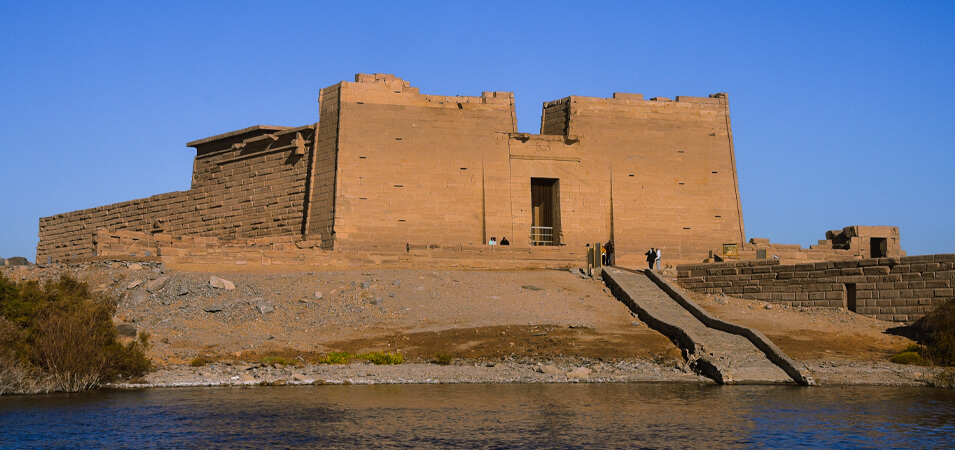
The Historical Significance of Egyptian Temples
When we delve into the historical significance of Egyptian temples, we unlock the door to an ancient world filled with cultural, religious, and societal revelations.
These majestic temples, scattered along the banks of the Nile, serve as time capsules, preserving the stories of a civilization that thrived thousands of years ago. At their core, these temples were not just places of worship but also epicenters of knowledge, art, and governance. They symbolize the very essence of life in ancient Egypt.
As we explore these remarkable structures, we unearth the deep connection between Egyptian temples and the pharaohs who ruled the land.
These temples were not merely places of devotion; they were statements of power and authority constructed to demonstrate the might and divine favor of the reigning pharaohs. The meticulous hieroglyphs and reliefs adorning the temple walls narrate tales of conquests, rituals, and the divine lineage of these rulers.
Moreover, Egyptian temples were closely tied to the celestial world. Many were aligned with astronomical events, like solstices and equinoxes, emphasizing the connection between the earthly realm and the cosmos.
This alignment was a testament to the Egyptians’ deep understanding of astronomy and their desire to bridge the gap between the mortal and divine.
The historical significance of Egyptian temples doesn’t end with their construction but extends into the religious practices and ceremonies that unfolded within their hallowed halls.
These rituals, performed by priests and devoted followers, honored the pantheon of gods and goddesses central to Egyptian belief systems. The temples were places where the living interacted with the divine, seeking blessings, guidance, and protection in this life and the next.
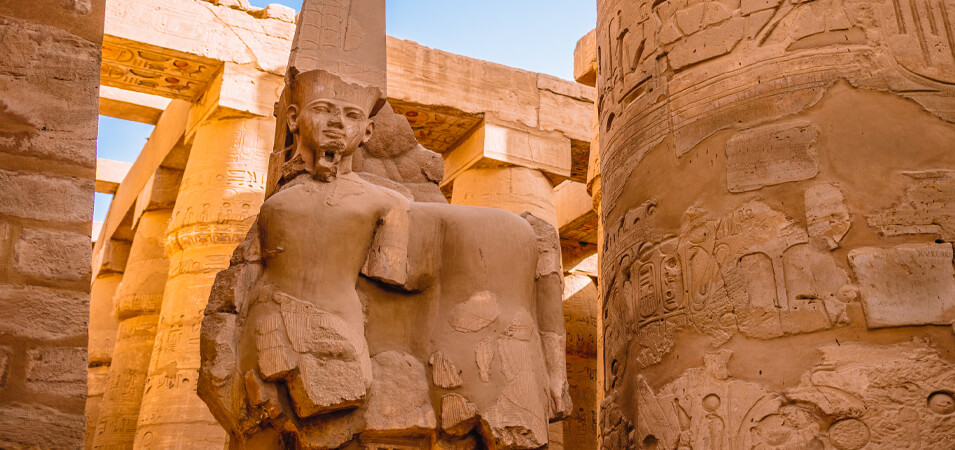
Tips for Visiting Egyptian Temples
Visiting Egyptian temples is an incredible journey through history and culture, but it’s essential to be well-prepared to make the most of your experience. Here are some helpful tips to ensure your visit to these ancient wonders is enjoyable and memorable:
- Choose the Right Season: Egypt’s climate can be extreme, so it’s wise to plan your visit during the cooler months, typically between October and April, to avoid the scorching summer heat.
- Respect Local Customs: When visiting active temples, dress modestly and be mindful of local customs. Respect the sacredness of these sites by following the rules and guidelines.
- Consider Guided Tours: Local guides can provide you with valuable insights into the history and significance of each temple, making your visit more informative and engaging.
- Photography Etiquette: While it’s tempting to capture the beauty of the temples, some sites have restrictions on flash photography to preserve ancient artifacts. Always adhere to the rules regarding photography.
- Stay Hydrated and Sun-Protected: Exploring these temples can be physically demanding, so carry water, wear sunscreen, and a hat to protect yourself from the strong Egyptian sun.
- Respect No-Entry Zones: Some parts of temples may be off-limits to visitors to prevent wear and tear. Always obey signs and instructions to help preserve these historical treasures.
- Learn About the Temples: Before your visit, educate yourself about the history and significance of the temples you plan to explore. This background knowledge will enrich your experience.
- Support Local Artisans: Purchase souvenirs and crafts from local vendors. Your support not only helps the local economy but also allows you to take home a piece of Egyptian culture.
By following these tips, you’ll be well-prepared for your adventure in Egypt’s remarkable temples, making the most of your journey through time and culture. Enjoy your exploration of these incredible historical sites!
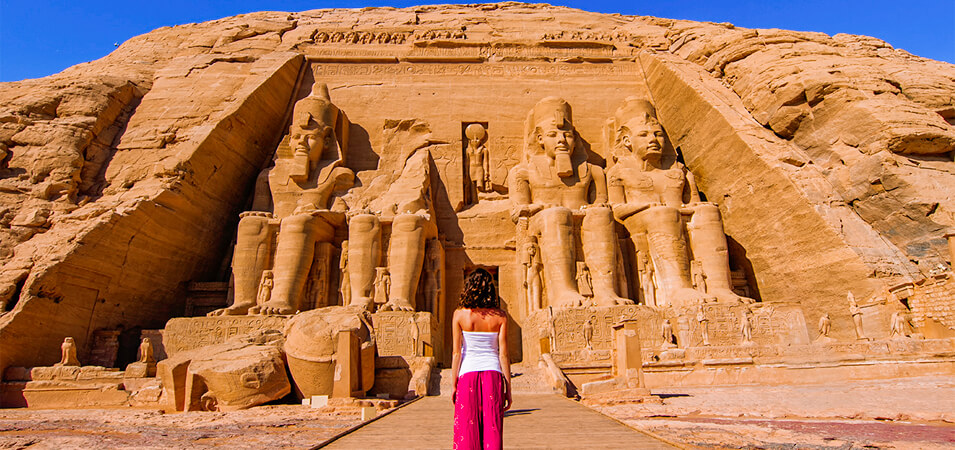
Conservation Efforts to Preserve Egyptian Temples
Preserving Egypt’s ancient temples is a global concern, as these historical treasures hold immense cultural and historical significance. Here, we’ll delve into the remarkable conservation efforts underway to protect and safeguard these temples for future generations.
- Restoration and Maintenance: Many temples are undergoing meticulous restoration and maintenance work. Skilled conservators use advanced techniques and materials to repair and preserve the intricate carvings and structures that have withstood the test of time.
- Monitoring and Climate Control: Cutting-edge technology and climate control systems are employed to ensure that the temples’ environments remain stable. This helps prevent the deterioration of delicate carvings and inscriptions.
- Education and Awareness: Raising awareness about the importance of temple preservation is a vital aspect of these efforts. Educational programs and public campaigns are helping people understand the value of these historic sites and the need to protect them.
- Community Involvement: Local communities are actively participating in temple conservation projects. Engaging with and empowering these communities not only creates a sense of ownership but also ensures that their cultural heritage is protected.
- Global Collaborations: International organizations and foreign governments collaborate with Egypt to provide expertise, funding, and technical support for temple preservation. These partnerships are crucial for the success of conservation initiatives.
- Legal Protection: Stronger legal frameworks are being established to protect the temples from looting and vandalism. Stricter laws and regulations are deterring illicit activities that endanger these precious sites.
The Role of Egyptian Temples in Religious Practices
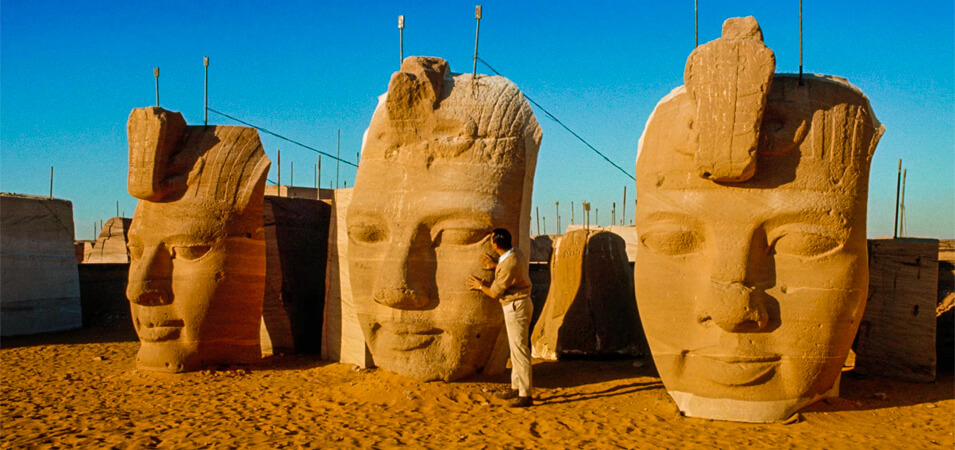
Egyptian temples played a central and profound role in the religious practices of ancient Egypt. In this section, we’ll delve into the significance of these temples as places of worship and their integral part in the spiritual life of the ancient Egyptians.
- Connecting Mortals with the Divine: Egyptian temples were believed to bridge the mortal world and the divine. They were places where the gods could manifest and interact with the people, providing blessings and guidance.
- Offerings and Rituals: Temples were where rituals and offerings were made to honor and appease the gods. These ceremonies were crucial in maintaining cosmic order and harmony in the ancient Egyptian worldview.
- House of the God: Temples were regarded as the earthly homes of specific gods. These deities had their own chambers within the temple, and the priests’ duty was to tend to the gods’ needs, ensuring their well-being and contentment.
- Education and Record-Keeping: Temples were centers of knowledge and education. They housed vast libraries of religious texts, and priests were responsible for maintaining these records, which held valuable insights into the religious beliefs and practices of the time.
- Community Gatherings: Temples were not only places of worship but also served as community centers. Festivals and gatherings brought people together to celebrate religious events and strengthen social bonds.
- Burial and Afterlife Beliefs: Some temples were closely associated with burial sites. For example, the mortuary temples of the pharaohs were dedicated to ensuring their successful journey into the afterlife.
Book Our Egypt Vacation Packages
Don’t Miss Reading our Related articles about :
- 10 Things That Will Surprise You About Traveling To Egypt
- Best Places to Visit in Luxor and Aswan
- Exploring the Magic of Christmas in Egypt: A Guide for Travelers
- Gifts to Buy From Egypt: Unveiling the Treasures of Ancient Craftsmanship
- The Best Places to Visit in Egypt: Unraveling the Riches of Ancient Civilization
- Tips for the Best Nile Cruises in Egypt Christmas
